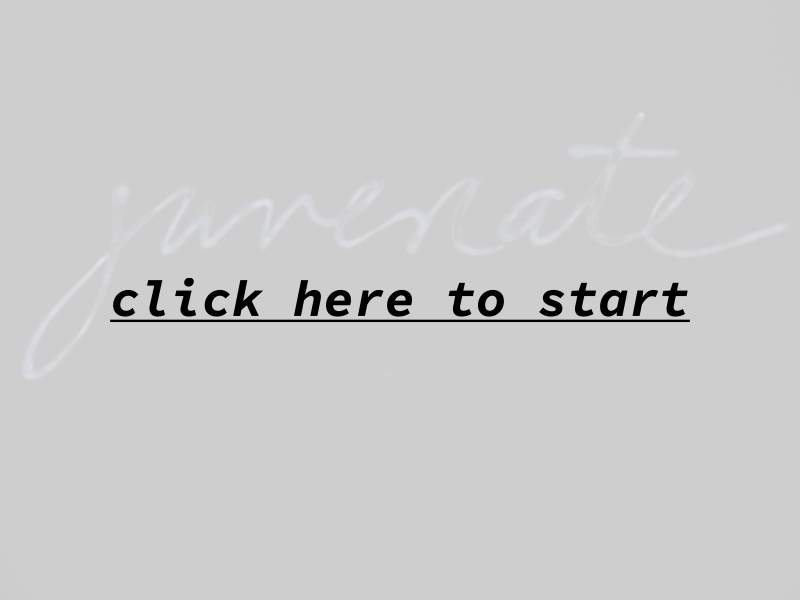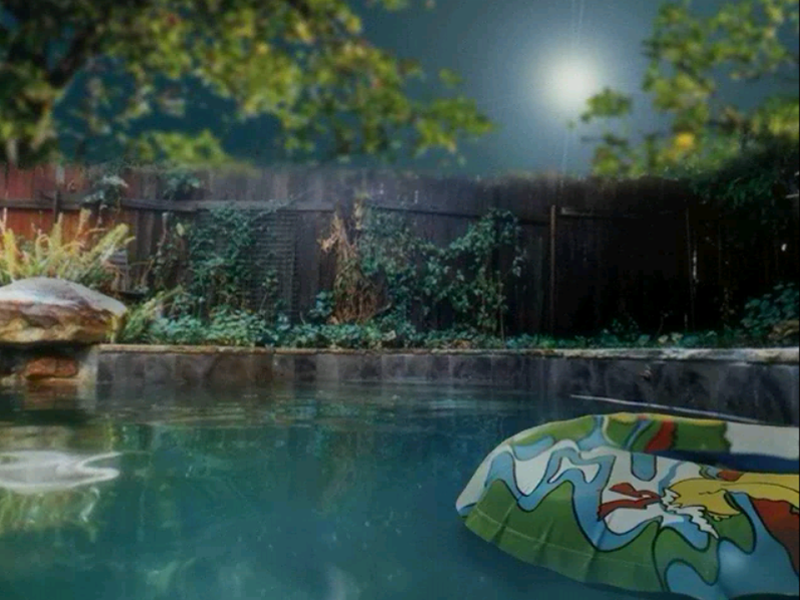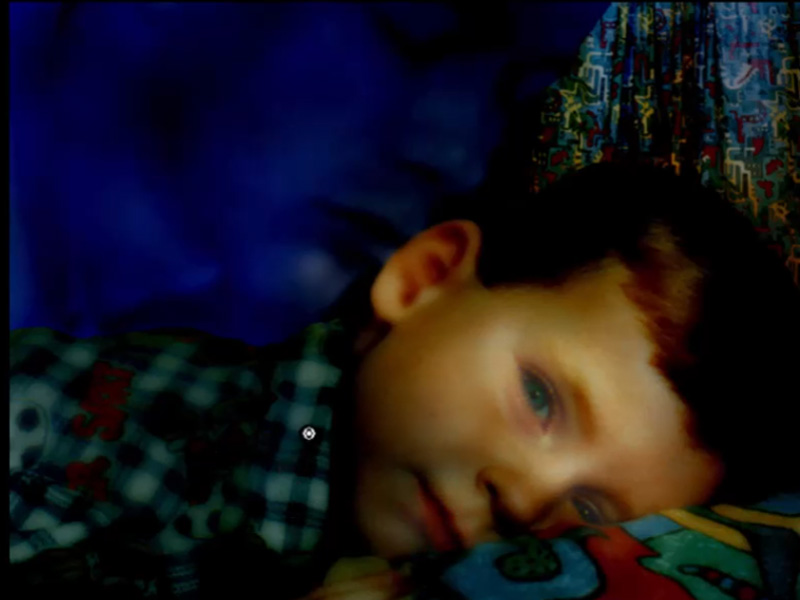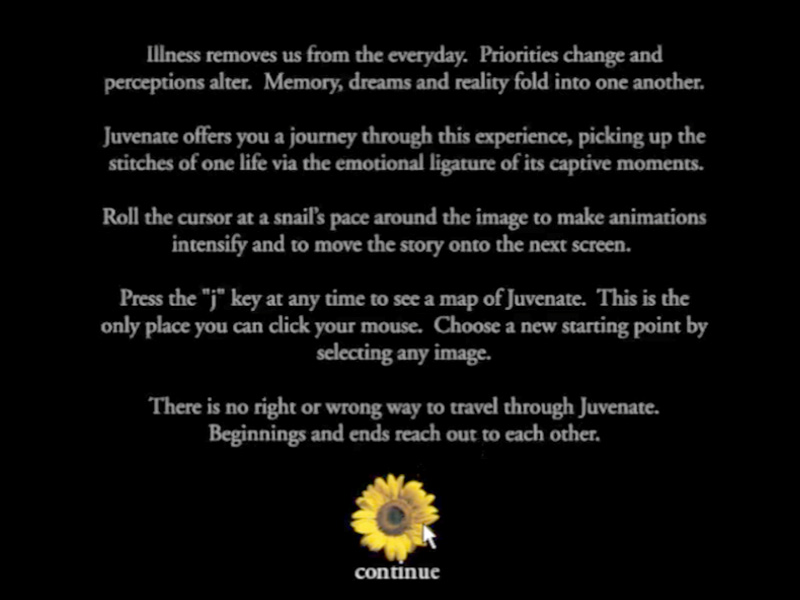Juvenate


Alach, Felen. 2002. ‘Michelle Glaser: writing digital art’. RealTime. April-May. 48: 21
Glaser, Michelle; Hutchinson, Andrew. 2024. Material provided by the artists.
Hutchison, Andrew. 2003. ‘Analysing the Performance of Interactive Narrative’. In DAC2003. Melbourne. 63-71
Ryan, Marie-Laure. 2006. Avatars of Story. Minneapolis: University of Minnesota Press.


